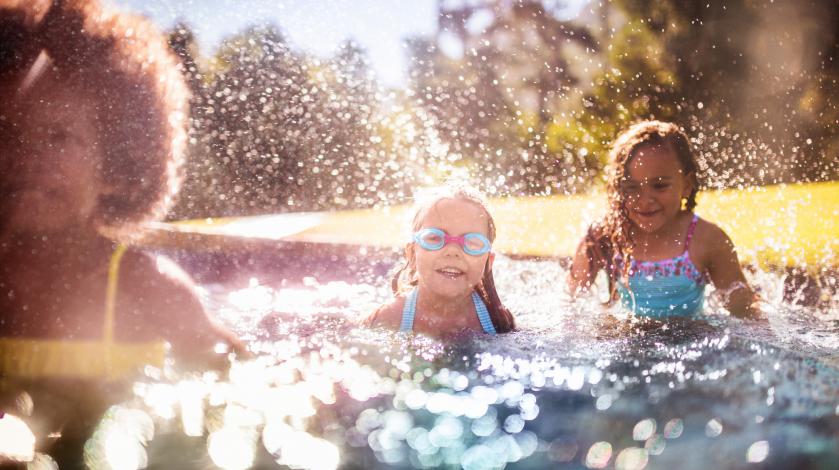Water and Swimming Safety: Tips to Prevent Drowning
Author

Sharon Gannon, BSN, RN
On average, there are ten fatal drownings per day in the United States. Drownings happen in seconds and are often silent.
Drowning is a leading cause of death in children, particularly between the ages of 1 and 9 years old.
It’s also a leading cause of death in adolescents, who are more likely to overestimate their skills and underestimate a dangerous situation.
In addition, substance use can potentially become a factor during adolescence: research indicates that alcohol is a leading risk factor in drownings and two-thirds of teens have tried alcohol by 12th grade.
Where do drownings commonly occur?
87% of drowning fatalities happen in home pools or hot tubs. 23% occur during family gatherings near a pool.
Younger children are more likely to drown in swimming pools, while teens are three times more likely to drown in natural bodies of water like lakes, rivers, oceans, and ponds.
Water safety tips for all ages
Drowning is preventable – follow these tips for safe swimming:
- Designate a water watcher. This individual is responsible for constant supervision of those in and around the pool or water area.
- Ensure your children know how to swim! Contact your local pools or parks and recreation departments to get information on swimming lessons near you. See below for more details on free swimming lessons in Massachusetts.
- Always closely supervise your children, even when lifeguards are present.
- Pools should be fenced and fully enclosed. Enclose kiddie pools as well and empty the pools when they are not in use.
- Floats and pool toys, including inflatables, are not life-saving devices. Use a U.S. Coast Guard-approved life jacket for weaker or non-swimmers around water and pools.
- Always wear a U.S. Coast Guard-approved life jacket when boating – this applies to all ages and all swimming abilities.
- Learn CPR. CPR saves lives!
- Keep a phone nearby to call 9-1-1 in the event of an emergency.
Water safety tips for teens
- Ensure your teen knows how to swim! See below for information on free swimming lessons offered by the state of Massachusetts this summer.
- Continue to supervise – it saves lives!
- Teach your teen to enter feet first when entering the water for the first time. Remind them to use extra caution when swimming in unfamiliar bodies of water, as there may be hazards like rocks, ledges, cars, or other objects below the surface.
- Encourage teens to swim where there are lifeguards present and in marked swimming areas.
- Recommend swimming with a friend and encourage your teen to avoid swimming alone.
- Always obey “No Swimming” and “No Diving” signs. Diving into unsafe or shallow water can lead to serious, and sometimes permanent, injuries.
- Stay sober on the water – learn how to talk to your children about alcohol use.
- Teach your teens about the safety risks that come with swimming in natural water spots, including rivers, lakes, and oceans. Encourage them to stay in designated swimming areas with lifeguards and to stay away from boating or fishing areas. Teach them how to identify undertows or rip currents.
Free swimming lessons near me
The Massachusetts Department of Conservation and Recreation (DCR) will offer a free American Red Cross Learn-to-Swim program this summer.
Free beginner swimming lessons will be available through the SWIM Program, approved by Massachusetts Governor Maura Healy.
Visit the state website to learn more about registration dates and available sessions.
This blog was written by Sharon Gannon, RN, South Shore Health Trauma Program Injury Prevention Coordinator.
Learn more about our Injury Prevention Program.
Author

Sharon Gannon, BSN, RN








